On May 20, 1966, close to dusk and in a light rain, B Company, 1st Battalion, 8th Cavalry (ABN/AMB), 1st Brigade, 1st Cavalry Division, commanded by Capt. Roy D. Martin was airlifted by Chinook helicopters (CH-47s) into a small clearing located in the mountains east of the Vinh Thanh Valley, Republic of Vietnam. The clearing had been designated LZ Horse and could accommodate only one CH-47 at a time.
The company had been ordered to the LZ to begin operations in search of a large NVA/VC force that had been heavily engaged with other units of the 1st Brigade since May 16th. Specifically, B Company along with C Company 1/8th were to link up on the morning of the 21st and generally proceed along a trail and streambed to the northeast of LZ Horse to engage and defeat an enemy force suspected of being in the area. Capt. William Mozey had arrived earlier that afternoon and had been committed in support of another unit who was heavily engaged to the north of LZ Horse. C Company had moved overland to the northeast of the landing zone and had also come under fire. They had beaten back an enemy attack and set up a perimeter for the night. The Battalion Commander, Lt Col. Levin Broughton and his staff on LZ Horse, briefed Martin on the operation that was to take place the next day, and he, in turn, briefed his platoon leaders. Bravo Company was to be on the right flank and Charlie Company to the left as they followed the trail and stream to the Northeast

On the morning of May 21st, B Company moved out of the LZ around 0700 following the trail and stream leading to the northeast. It was already hot and humid even though overcast, with mist in the valleys and light fog at the higher elevations around the LZ. We were tense and fully expected to contact the enemy at some point that day. I commanded the 2nd Platoon and we assumed point for the company. Capt. Martin and his Command Group followed. The 1st Platoon commanded by Lt. Robert Crum from Houston, Texas followed slightly to my right rear and was responsible for right flank security. Behind them was the 3rd Platoon commanded by Lt Jared East from Lake Charles, Louisiana. He was charged with responsibility for rear security and was designated the company reserve. The mortar platoon commanded by Lt. William Hughes from Cordele, Georgia would remain on LZ Horse and provide mortar fire in support of the move, if necessary. C Company was to my left flank on higher ground above the streambed, but to the best of my knowledge, no one from B Company ever made visual contact with them as we began moving.
The area along the stream was moderately covered in vegetation with both tall grass and trees and fair visibility; however, to the left and right the mountains rose quickly from the valley floor and were covered by tall trees and heavy vegetation. It almost felt like the mountainous terrain was closing in on us. About 500-600 meters northeast of LZ Horse the platoon moved to the left away from the stream and along higher ground. We passed through an area of triple canopy jungle that had been the scene of heavy fighting the previous day by either C Company or the company they had relieved on the 20th. The predominant hill located to the northwest of LZ Horse was Hill 766, which meant the uppermost point of the hill was 766 meters high or over 2500 feet above the valley floor. The area we were now crossing was located northeast of LZ Horse and almost due east of Hill 766. Battle litter was strewn throughout an area slightly smaller than a football field and there was a smell of death everywhere. I noticed ropes hanging from several tall trees, probably where NVA/VC snipers had been strategically placed to engage any friendly forces entering the area. After passing through the area we moved back toward the stream and continued our move to the northeast. The tension increased dramatically, and we remained on high alert. We had still had not made visual contact with C Company.
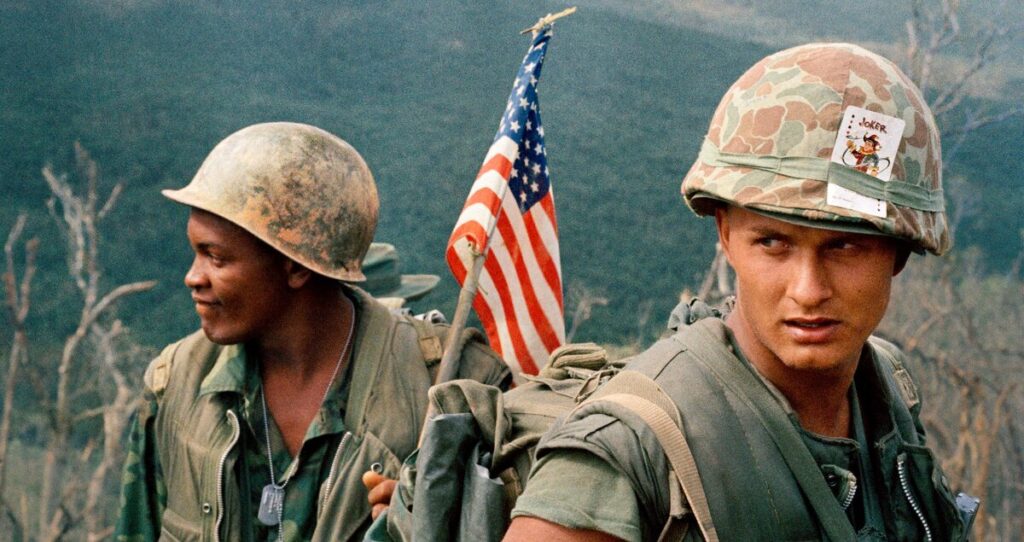
Around 1000 hours the platoon came to an intersection in the stream. The right fork went to the south while the other, the one we had been following, continued to the northeast. My point squad had already started to the south. Uncertain of which way to proceed, I called a halt to the march and radioed Capt. Martin explained the situation and asked for instructions on how to proceed. At the same time, I ordered my lead squad up an embankment on our left to take up defensive positions and provide security for the remainder of the platoon which was still spread along the streambed. The tip of this embankment was the point of a finger ridge flowing from the south/southeast down to the streambed. As the squad moved into position at the top of the bank it came under fire and Sp4 Milton Parks, the point man for the platoon, was shot in the hip. The squad immediately returned fire toward the suspected enemy position and the unknown size enemy force withdrew.
Several members of the platoon pulled Parks back to the protection of the streambed where our medic, Sp4 Adell Alston, began working on the wound to stop the bleeding and to prevent Parks from going into shock. The remainder of the platoon took up defensive positions. Capt. Martin, his Command Group, along with 1st Sergeant Ray “Top” Poynter joined me in the streambed. 1st Sgt Poynter organized a litter for Parks, made from two poles and a poncho, and filled out a casualty report. I then designated a squad, led by Sgt Dewey Underwood, to escort Parks back to LZ Horse since there were no suitable LZ’s in the immediate vicinity of our location allowing for evacuation by helicopter. This entire action took approximately 45 minutes to complete.
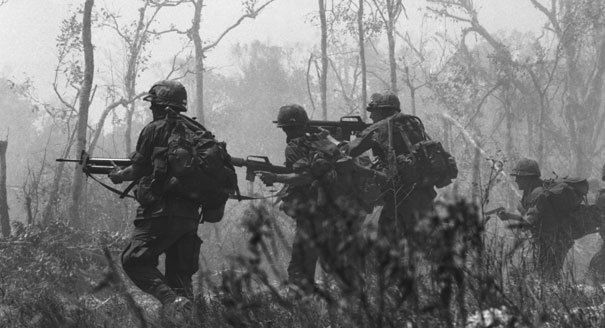
The company led by the 2nd Platoon again began moving to the northeast and parallel to the stream. We were about 50 yards south of the stream traversing over the ridge where the enemy had fired on us. We crossed this ridge, which flowed from higher ground towards the streambed, moved through a draw, crossed another ridge and draw, and then approached a third finger ridge. As the platoon moved up this ridge, we found enemy positions that had recently been occupied by an NVA/VC force of unknown size. Cooking fires were still smoldering, and rice was scattered around the fires. A heavily traveled trail 4 to 5 feet wide ran along the center of the finger and led down towards the streambed. As I recall this ridge or finger was about 500 – 800 meters from the earlier firing incident and what I estimated to be about 2500 meters from LZ Horse.
At this juncture Capt. Martin called a halt to our route of march and told the platoons to establish a perimeter so he could contact and meet Capt. Mozey near the streambed. It was around 1230 in the afternoon. On Martin’s instructions, I moved the 2nd Platoon to cover the south and eastern side of the finger, covering the southeastern portion of the trail with one of my machine guns. I could see another ridge to the east/northeast with another draw between our position and that ridge. Close to the stream, this draw was open; but, toward the higher ground, it was heavily vegetated, covered with boulders, and looked very steep. Lt. Crum’s 1st Platoon covered a portion of the north and the east side of the perimeter overlooking the draw and the streambed. Lt. East and his platoon covered the remainder of the perimeter by linking in with both platoons. C Company was now positioned across the streambed to our north and were higher up on a hill mass, somewhat parallel to and overlooking our perimeter. Martin advised us to eat lunch during this halt as we might not have an opportunity to do so later. He then met and conferred with Mozey near the streambed, so they could plan their next move and preclude any confusion by either company when we resumed the assigned mission.
During this break, my machine gun crew covering the trail spotted 2 or 3 enemy soldiers about 50 yards from their position moving down the trail towards our perimeter; however, before they could engage, the enemy soldiers turned to the east and vanished into the triple canopy jungle. I reported this to Martin and alerted the other platoon leaders. When Martin returned from his meeting with Mozey he called the platoon leaders to the Command Group location in the center of the perimeter where he again briefed us on our mission. We would continue our line of march to the northeast generally paralleling the stream and attempt to make contact and destroy any NVA/VC force in the area. We would continue as before with the 2nd Platoon in the lead, followed by the Command Group, the 1st Platoon, and then the 3rd Platoon. C Company would monitor our initial movement from their positions across the streambed and provide fire support if needed. They would then move parallel to our company once we reached the next finger ridge. According to Martin, he had noted unoccupied enemy bunkers on C Company’s side of the stream and Mozey and his men now occupied some of these bunkers. These positions would provide C Company a good view of both the stream and the draw as Bravo Company traversed this area.
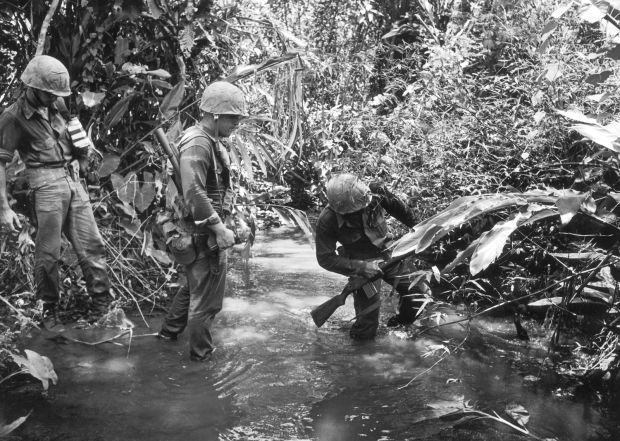
At approximately 1400 hours, the platoon moved off the finger ridge, swung away from the stream, and moved slightly to the right. The Command Group followed. The movement was cautious and painstaking slow since we had spotted enemy soldiers in the area. In addition, the draw was heavily vegetated, boulder-strewn, and tall trees covered the area further impeding our movement. In retrospect, I believe the 1st Platoon, instead of following the route taken by my platoon and the Command Group, swung to the left toward the stream and into a more open area. This made their movement easier, but also made them more vulnerable to the attack that was forthcoming.
As the 2nd Platoon finally reached and began moving over the next finger ridge, a violent and sustained burst of NVA/VC heavy weapons fire erupted behind us and was directed at the remainder of the company following my platoon. The fire came from well-concealed enemy positions and bunkers to my right rear and from the ridge above the draw. At least two 50-caliber and several 30-caliber machine guns, as well as AK-47 automatic rifles and SKS assault rifles, were raining accurate and deadly fire on the 1st Platoon which had taken casualties immediately and were now pinned down. The 3rd Platoon, which had just begun their movement into the draw, was also receiving fire and were also pinned down. Without question, the NVA had initiated an almost perfect ambush on the 1st and 3rd Platoons. It was now almost 1500 hours.
After the initial shock I realized no enemy fire was being directed at the 2nd Platoon and on instructions from Capt. Martin immediately ordered the platoon to move on line and begin maneuvering up the finger towards the enemy positions to flank the enemy positions. Despite what I had been taught during tactics training at The Infantry School, Fort Benning, Georgia to charge the enemy positions and attempt a breakout, I instructed the platoon to stay low and to crawl up the finger towards the entrenched enemy force. I still did not know the size of the enemy force but knew it was substantial from the number of machine guns and small arms firing on the rest of the company. I suspected at least a reinforced company or larger.
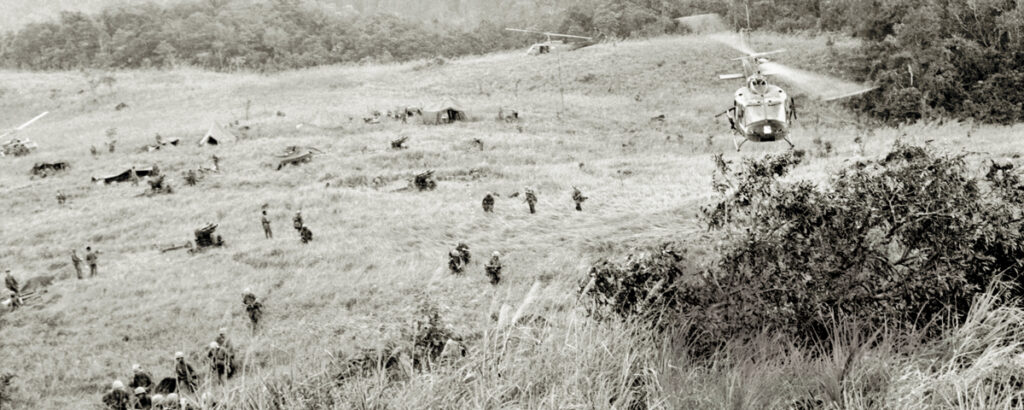
As we pushed up the finger the platoon still did not draw any fire; however, as we neared the upper portion of the ridge one of my soldiers yelled: “there’s a GI up here.” Looking to my front and left I spotted a fully armed NVA soldier in khaki uniform and helmet standing about 30 yards away. He appeared to be looking for us, which I assume he thought, would have charged up the finger. Several of the platoon members immediately took him under fire and he dropped where he stood. In response, the platoon was greeted with a hail of fire from the top and the left side of the ridge. Apparently, the NVA/VC force had either established another ambush position to prevent us from attacking the enemy positions that were firing on the remainder of the company or they had unknowingly left a gap in their positions. Surprisingly none of the platoon members were hit although we could hear bullets whipping by, impacting trees, and snapping branches over our heads.
Worried of a second ambush I ordered the platoon to withdraw back towards the stream where we met the Company Command Group. They were hunkered down behind several large trees in a defiladed position about 50-75 yards from the stream and at least a similar if not greater distance to top of the ridge. Looking back towards the 1st Platoon’s position in the draw, I could see Sgt Gerald Hoover lying dead about 15-20 yards from where we were located. Capt. Martin, in a calm and steady voice, stated that Hoover had reported Lt. Crum was dead as were several others from the 1st Platoon just prior to Hoover himself taking a round in the chest which killed him instantly. The CO also said the 3rd Platoon, which for the most part was still occupying the ridge where we had lunch, could not move due to heavy fire from enemy positions above him. I told Martin that we had attempted to flank the enemy positions who were firing on the other two platoons but were unsuccessful as the platoon had drawn fire from what appeared to be well-concealed positions to our front and left as we moved up the finger. I also told him we had not received any fire from outright and there appeared to be a gap in the NVA/VC positions.
Capt. Martin made a quick decision on the spot and again in his steady and calm voice said, “We are going to attack.” The platoon and the Command Group then began moving up the finger, but this time maneuvered to the right side of the ridge and towards the draw where 1st Platoon was trapped. The rain had begun falling in sheets at the outset of our move and the light was fading quickly due to the heavy downpour and the tall trees around us which virtually blocked out the sky. C Company and our 3rd Platoon aided our movement at the request of Capt. Martin by placing a heavy volume of fire on the NVA/VC force near the top of the ridge where the initial enemy fire came from. This concentrated fire evidently caused the enemy to stay down and probably prevented any reinforcement of the main enemy positions; however, they did continue to fire on the 1st and 3rd Platoons, but at a much-reduced volume. Additionally, Capt. Martin had requested and received operational control of a platoon led by Lt. Frank Vavrek from C Company to fill the gap created when the critically injured 1st platoon survivors and wounded began withdrawing towards the 3rd Platoon and Charlie Company elements. These moves allowed us to move unheeded and unnoticed past the enemy bunkers near the top of the ridge. Capt. Martin then called for Charlie Company and our 3rd Platoon to shift their fire to the top of the ridge above our location and on suspected enemy routes of movement into the area. I later learned that both East’s and Vavrek’s platoons also successfully fought of an attack by an NVA platoon size element who was attempting to outflank them.
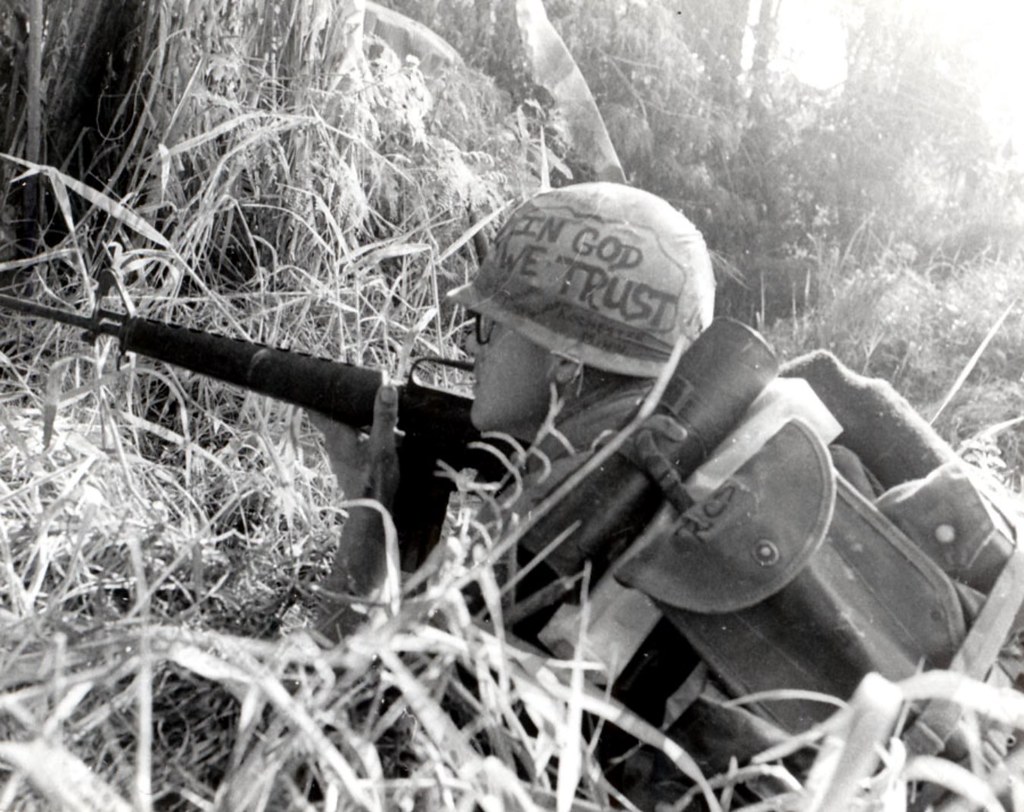
On reaching a position slightly below the top of the ridge the platoon and the Command Group turned right paralleling a trail behind the enemy positions. Platoon Sergeant James L. Johnson tripped over some communications wires running from the enemy positions below us to an unknown location. He cut the wire thus severing any communications between the enemy forces. Johnson and Sgt Arsenio Lujan, along with several men, then took up security positions to prevent any reinforcements from approaching from the south or east. The platoon deployed on line behind the dug-in enemy positions. The Command Group also deployed along this same line with Martin, his RTOs, the company medic and the Artillery Recon Sergeant to the right of my position. Sp4 William Goode, the platoon mortar forward observer, was to my left and one rifle squad led by Sgt Leroy Christian was deployed just beyond him. Sgt Antonio Lopez’ rifle squad was to my right just past the Command Group. The weapons squad’s machine gun crews were interspersed with both rifle squads. By my estimate, the total strength of our assault force including the Command Group was between 30 to 35 men. Once we were deployed Martin ordered the attack on the enemy positions below us.
As we began moving downhill the enemy apparently had become aware, they had been flanked and were beginning to reposition to meet our attack. We immediately took them under fire and started inflicting casualties. I moved behind a large tree and told Sp4 Allen Ritter, my RTO, to stay behind me and the tree; however, he stepped out to engage an NVA soldier trying to escape the deadly fire. An enemy machine gun opened fire on our position wounding Ritter in or just above the knee. I spotted the machine gun as I and the platoon medic pulled him to safety. The medic began working on him immediately to stop the bleeding and bandage the wound.

The gun was about twenty-twenty five yards from my position, was well camouflaged, and was located just to the left side of a well-traveled trail which led down towards the stream. I realized this position was a direct threat to the assault and, if not neutralized, would jeopardize our movement on the bunker complex. Without hesitation, I pulled a grenade from my harness, released the pin, waited two counts and then threw it at the machine gun position. As it exploded, I sprinted downhill toward the position and shot the three NVA soldiers occupying the position. The gunner, although dazed and seriously wounded, was attempting to reach for the machine gun when I shot him. I then looked down the trail and saw another NVA soldier moving up the trail toward me carrying additional machine gun ammunition evidently with the intent to re-supply the position. I fired twice shooting him in the center of the chest and he fell on the spot. He had an SKS assault rifle slung on his back. I retrieved the rifle, slung it across my back, and began moving towards another bunker to the right of the trail. I tossed a grenade through the rear entrance, took cover until it explodes, and then sprayed the bunker with M-16 fire. I don’t know if I killed all the people in the bunker, but there was no further fire from it.
To the right and left I could see the remainder of the platoon and the Command Group advancing on the bunker complex, destroying each of the bunkers as they progressed down the hill. I specifically recalled Sp4 Goode and the squad to my left throwing grenades, firing their M-16s, M-79 grenade launchers, and machine guns as they moved toward and through the bunkers. I could also see Capt. Martin, the rest of the command group, and Sgt Lopez and his squad doing the same to my right. I saw Martin take out a least one sniper in the trees to our front and attack several of the bunkers that had been firing on our 1st and 3rd Platoons. I also saw Lopez drop another NVA soldier moving up the trail towards his and Capt. Martin’s position. Although I did not witness any other platoon members individual actions, there is little question they had inflicted heavy casualties on the NVA force, since they were no longer returning fire at either the assault force or the friendly forces at the bottom of the ridge and enemy soldiers were being shot as they attempted to flee the area.
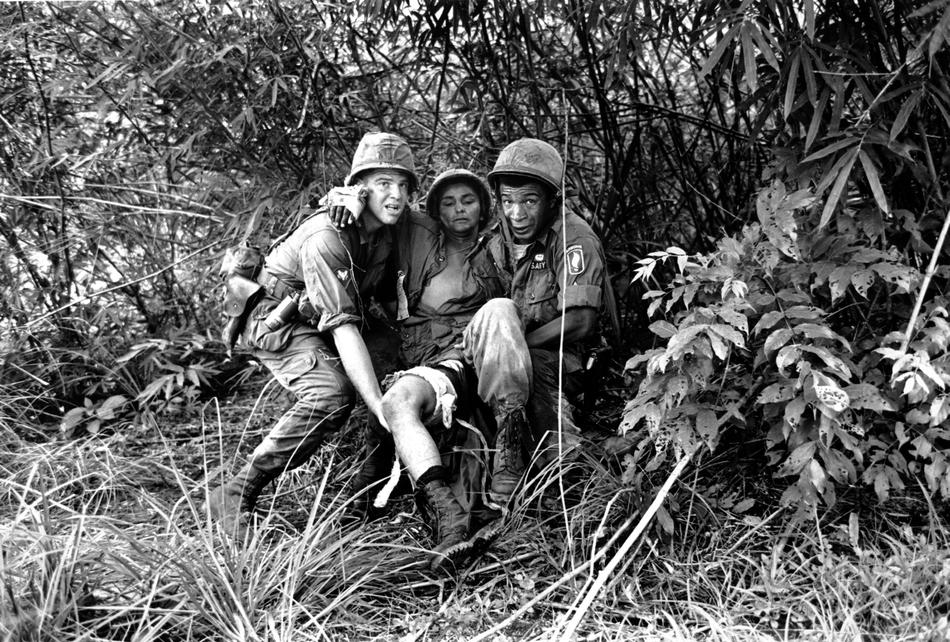
It was now close to 2000 hours and a heavy downpour continued to fall. Darkness had fallen and flares, called in by C Company’s forward observer, guided us as we neared the bottom of the finger where we were met by Lt. East’s 3rd Platoon and Vavrek’s platoon. Capt. Martin asked both platoon leaders to begin evacuating the wounded and dead across the streambed and into the safety of C Company’s defensive perimeter which had now been established on the opposite ridge. He asked my platoon to provide security for the two platoons as they conducted the evacuation. There remained a concern that the NVA would reorganize and resume their attack, although this did not happen. Capt. Martin then formed a search party and began scouring the draw for any dead or missing warriors who had not yet been recovered.
The search and evacuation lasted several hours as the wounded and the dead were transported across the steam and up the trail into Charlie Company’s perimeter on the high ground to the North. This alone proved to be a daunting task as the trail leading to the perimeter had become a muddy morass. Troopers would make their way five or ten feet up the trail with the wounded and dead and then lose their footing and slide back down the trail as much as six feet or more. The movement was finally completed after midnight when the Command Group and the 2nd Platoon closed on the perimeter. 1st Sergeant Poynter met me as I entered the security of Charlie Company’s position and told me that Ritter, my RTO, had not made it. He stated Ritter died shortly after being carried him into the perimeter. The news was heartfelt and deeply saddening insomuch as the medic and others had been able to keep him alive and transport him to the safety of Charlie Company only to have him expire just within friendly lines.
The wounded and dead were located toward the center of the perimeter and the medics from both companies were working on the wounded. A company headcount was taken, and it was discovered Lt. Crum and Pvt Angel Rodriguez were still missing. Capt. Martin, after conferring with Mozey, decided a search would be conducted in the morning since all reports from the remainder of the 1st Platoon said Crum and Rodriguez had been killed. Capt. Martin then directed me to move the 2nd Platoon further up the ridge to the northeastern end of the perimeter and take up positions in case of further attacks during the night. Just moving the platoon further up the ridge to this area proved to be a task with the muddy conditions and the fact all of us were totally exhausted. After locating the last element of Charlie Company on the northern portion of the ridge, I instructed the squad leaders to dig in as best they could and place their men into three-man defensive positions. I also instructed each position to keep one man on alert and that they eat what rations they still had. I positioned the platoon headquarters just behind the northernmost point of the perimeter and notified Capt. Martin when we were finally in position. It was now May 22 and artillery units continued to fire illumination rounds throughout the night. It continued to rain heavily and although there was occasional rifle fire there were no probes attempted on the perimeter the rest of the night.
As the morning of the 22nd broke, helicopters flew over the perimeter and dropped much-needed supplies, including chainsaws that allowed troops to open a clearing, so the wounded and dead could be evacuated by baskets winched down from a CH-47 Chinook helicopter. The wounded were lifted out first, then the dead. Captured equipment and documents were evacuated last. My platoon, along with the remainder of Bravo Company, took this opportunity to rest, clean weapons, and re-supply with ammunition and rations.
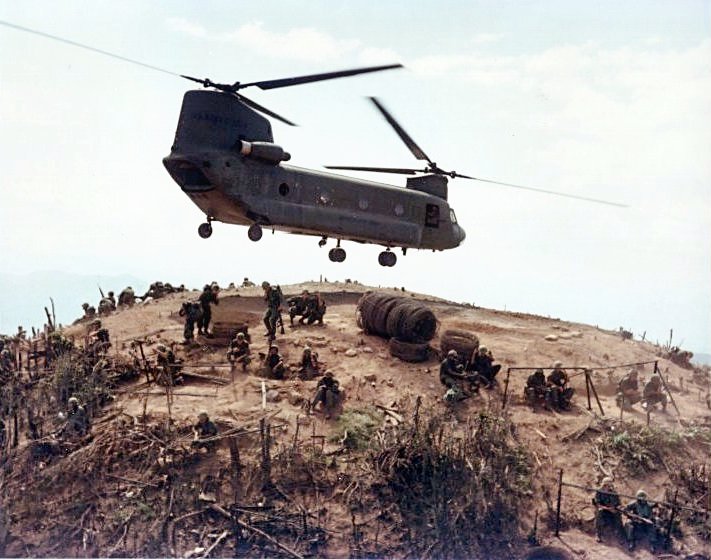
Charlie Company, guided by Pvt David Dolby and Pvt Kenneth Fernandez from the 1st Platoon, returned to the site of initial contact and were able to find and recover the bodies of Lt. Crum and Pvt Rodriguez. They evacuated the bodies to the safety of the perimeter. The total killed in the battle now numbered eleven; eight from the 1st Platoon, Sp4 Alan Ritter from my platoon, and two from Vavrek’s platoon. There were also at least 15 wounded, most from the 1st Platoon.
Charlie Company returned to the top of the ridge where the NVA had initiated the battle. According to Mozey, he and his company found over 50 NVA bodies including the body of a senior NVA commander and a Chinese advisor, in one of the bunkers. They also found numerous blood trails and battle litter leading away from the area indicating the NVA had suffered more casualties as they pulled out. They made no contact during their search of the area and then returned to the ridge where Bravo Company still manned the perimeter with additional weapons and materials they had found. Evacuation of all materials was completed later that day by helicopter and both companies, as I recall, remained on the ridge that night before moving their separate ways on May 23rd.
Bravo Company was ordered back to LZ Horse by a circuitous overland route through the mountainous terrain and jungle with the 2nd Platoon again moving as the point for the company. During the move, we discovered another major NVA/VC base camp and several graves near another stream to the west of the battle site. The encampment can hold at least a battalion size element, complete with latrines, cooking areas dug into the banks above the stream in such a manner as to diffuse the smoke, and sleeping areas; however, we made no further contact with any enemy soldiers in the area and returned to the LZ without further incident.
We were then airlifted from LZ Horse to LZ Colt where we assumed defensive positions with other units of the battalion on a forward artillery base along with a unit from the Republic of Korea. The perimeter was probed several times by small enemy units and we were continually fired on by snipers at the new location. A new Lieutenant, Robert Heath, was assigned to the company to replace Lt. Crum. We patrolled aggressively around the LZ in platoon size elements. It was during one of these patrols that Capt. Martin, while guiding my platoon to one of the sniper locations from a helicopter, was seriously wounded in the leg by the sniper. He was immediately evacuated for medical attention and never returned to the company. His loss was felt immediately not only by my platoon but by the entire company and battalion. We never located the sniper, nor did we make any contact with enemy forces during the remainder of our stay at LZ Colt. The company, under a new commander Capt. Gerrell V. Plummer, made several additional air assaults and conducted platoon and company patrols for several days in the mountainous terrain in the area of operations between the Vinh Thanh and the Soui Ca Valleys.
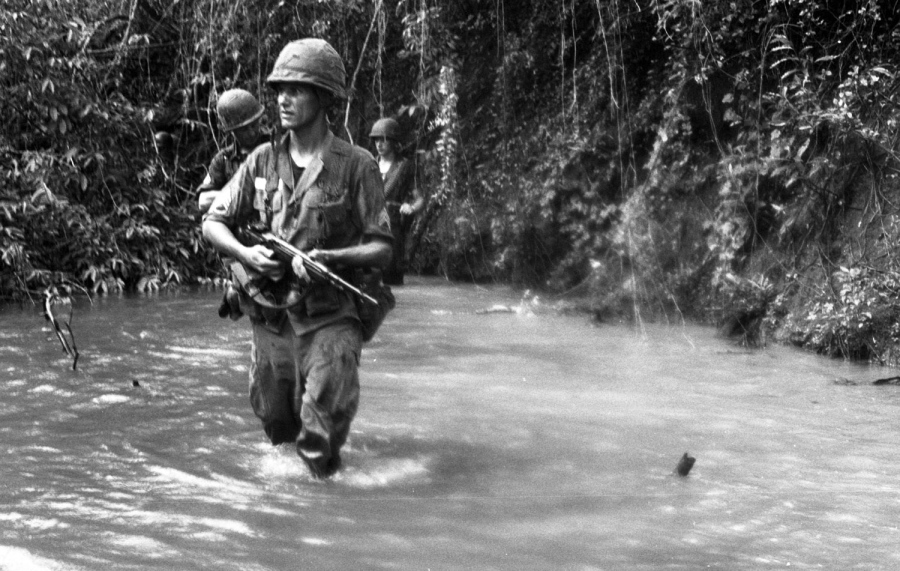
As Operation Crazy Horse wound down the company patrolled to the west and finally back to the Vinh Thanh Valley. We were then moved by motor convoy back to the base camp at An Khe in early June, bringing an end our involvement in Operation Crazy Horse.
This article is dedicated to the members of the Command Group led by Capt. Roy D. Martin, the men of the 2nd Platoon, Bravo Company, 1st Battalion, 8th Cavalry, 1st Cavalry Division, to the men of the 1st and 3rd platoons, and to the men of Charley Company who provided much-needed fire support during the assault on the enemy positions. It is especially dedicated to those men who paid the ultimate sacrifice on 21 May 21, 1966, and who to this day hold a special place in my heart.
Bravo Company Charlie Company
2nd Lt. Robert H. Crum, Jr Sp4 David M. Jolley
Sgt Gerald D. Hoover Sp4 Michael G. Vinassa
Pfc David J. Canales
Pfc Michael G. Cryar
Sp4 Richard F. Lease
Pfc Gerald E. Metcalf
Sp4 Allen J. Ritter
Pfc Michael E. DeVoe
Pfc Angel E. Rodriguez
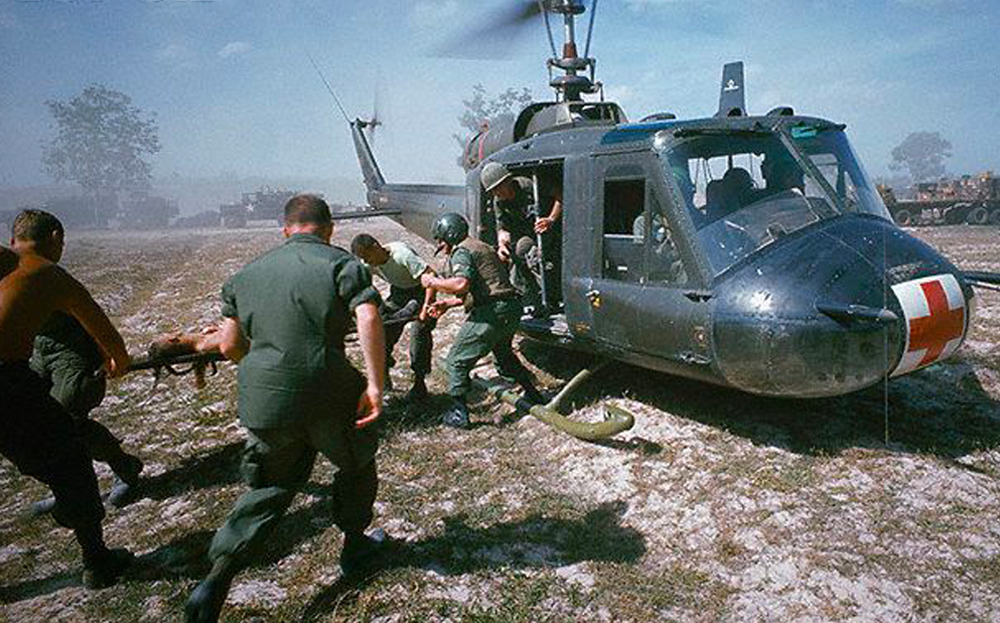
Robert Crum was in our OCS class at Ft Benning. A very good man. So sad to read about him after all these years.
May God bless his soul
Anyone remember. P F C GERALD METCALF B COMP 1ST PLATOON 1ST BAT. K I A 22 MAY 1966 DID ANYONE KNOW HOW HE WAS KILLED. HE IS BURIED IN ROCKHILL CEMETERY FOXBORO MASS.
After all these years, this is the first I read this story. There are a few mistakes. I was Lt Crumbs RTO. On the onset a pom pom grenade went off between LT Crum and my self.Luckly the blast went away from us. There then was a hail of fire. Lt and I returned fire and went down a recline. We had fairly good cover and held off a charge of 10 to 15 NVR. After a second round of fire, 5 to 10 more came down and we held them off. Looking around we could not find any of the platoon. Lt Crum took the hand set to call Captain Martin and another hail of fire came. Lt Crum screamed and went down with a shot to his head. I returned fire and then informed Captain Martin my 6 was down. There was no more gun fire so I pulled the Lt down the hill. At the bottom, we joined with the rest. The Lt was a great man
I was the FA FO for A Company 1/12 and we were inserted in on of the first night time assaults as reinforcements. The enemy opened as we moved up the hill to the perimeter, then closed behind us. They had captured some M-79 grenade launchers which they fired throughout the night. Enemy attacked at first light when I suffered my first combat wound. and were beaten back. We made it back to the saddle and were medevaced. Two or three days later a platoon was on the saddle when attacked. Sam Casten (?), a reporter for a magazine was killed and the platoon took numerous casualties. Sam’s camera was recaptured several days later which revealed photos of the platoon prior to the attack.
I was one of Captain Martin’s RTOs during this battle and remember going up and then down on the bunkers from behind them on line. I was 2nd Platoon RTO. I WILL NEVER FORGET THE GUYS WHO DIED.
Sergeant E-5 Robert Mullins
Left Tackle 2-6 India
I took over from Ritter after he was killed to become Lt. Karoly’s RTO from that point on. We outflanked the NVA and basically saved the day by coming down on the bunkers from the top of the hill. I was blessed to be his RTO and honored to serve with him and all the men of 1st of the 8th. I will never forget that day.
Bob Mullins is correct. He took over for Ritter as my RTO after he was hit. Karoly, who had been one of the Lieutenants in Bravo Company, had left the Company to take over as the assistant S-2 at Battalion. I was the platoon leader of the 2nd Platoon and was standing next to Ritter when he was hit.
I will always remember you, LT. Bill, and was proud to be your RTO. You were a fine officer and I knew I had to uphold the professionalism of my buddy, Ritter, and do a good job. He was a tough act to follow. Airborne! All the way!
It was Bravo 2/8th, not 1/8th.
Bravo 2/8th was awarded the UVW (UNIT VALOROUS
AWARD)
20 KIA and several wounded.
Hello and THANK YOU FOR YOUR SERVICE!!! My name is Terra. I am the granddaughter of a Veteran, sister to 2 Veterans, the niece and an aunt of 2 other veterans. I have been the supporter and advocate for Veterans for, at least, 20 years now. That being said, I just want to say my heart goes out to all of you and THANK YOU for this Blog because THIS is how I found the photo, that I have been looking for, of a Veteran friend of mine, ANDREW BROWN. HE IS THE PARATROOPER & MEDIC ON THE RIGHT, IN PHOTO #9.
I will be honoring Andrew Brown at (my created) event, The Veterans’ Valentine, on April 26, 2025, in Highland, IN. If any, and all, of you are able to and wish to attend, you are most welcome to. You can reach me by email at [email protected]. Please put “My fellow Vet or Andrew Brown” in the subject line. THANK YOU AND KNOW THAT, IN MY EYES AND HEART, NONE OF YOU ARE FORGOTTEN OR FORSAKEN…. which is WHY I am your Veteran Valentine. ~XOXO